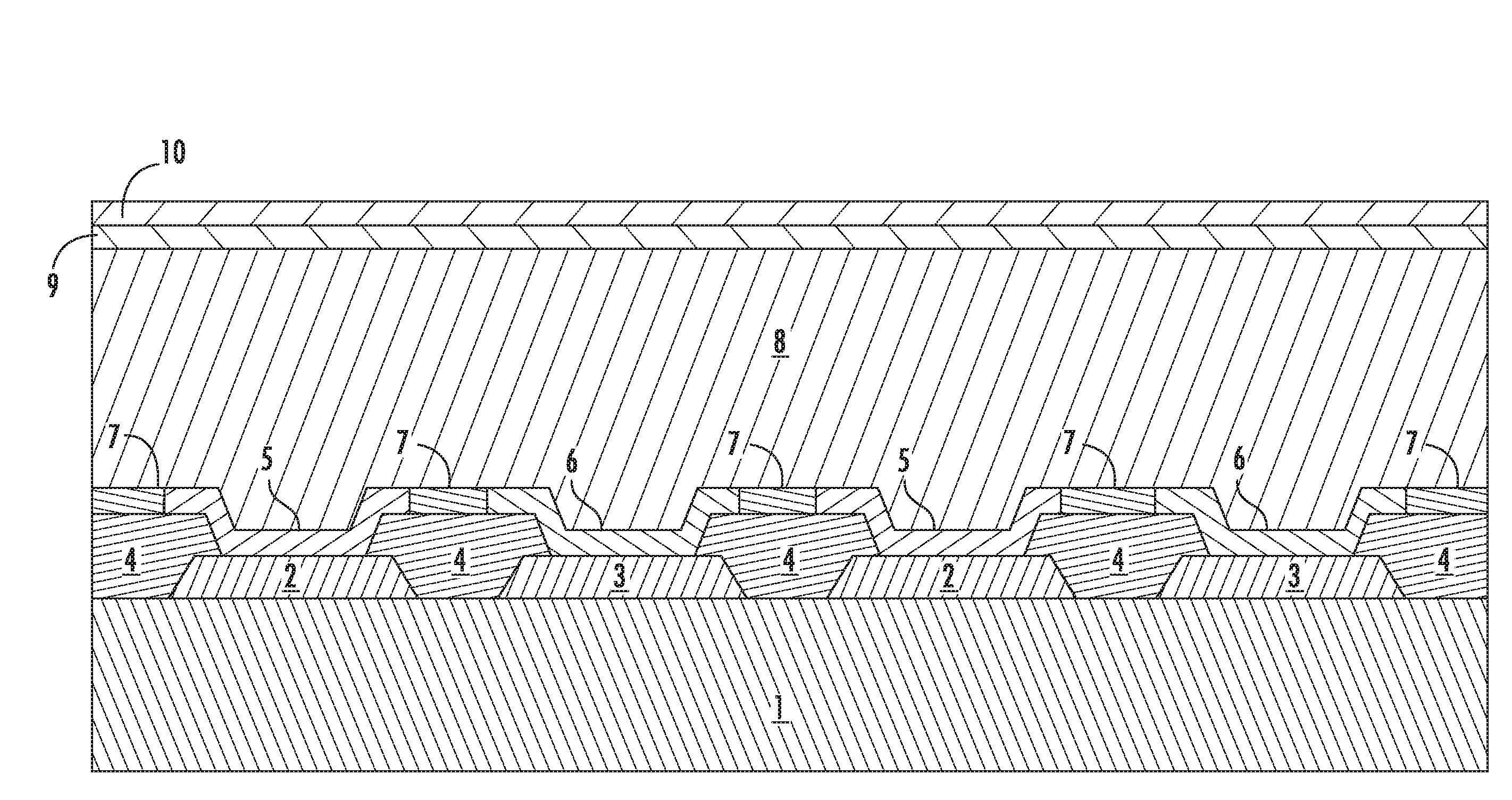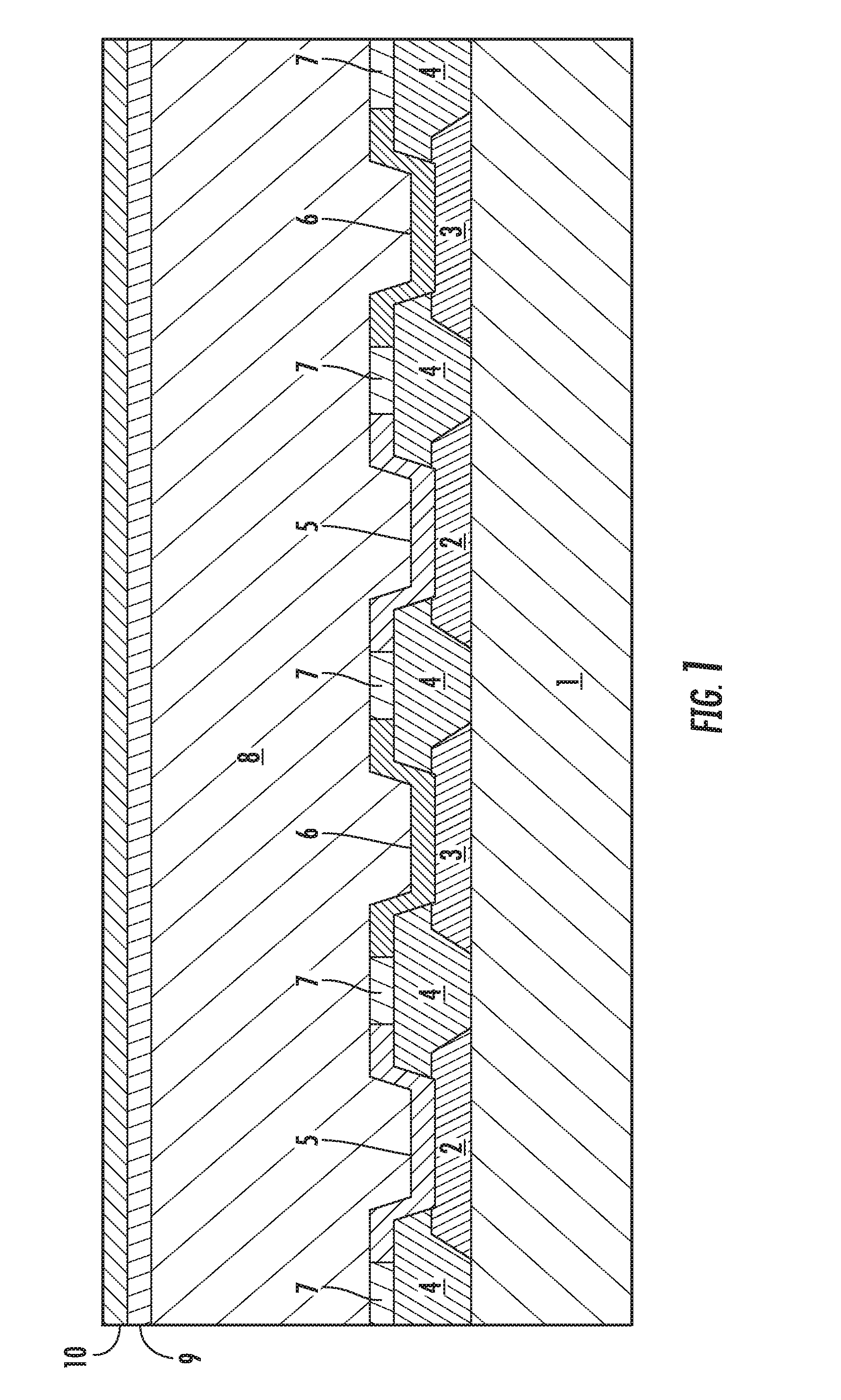Modular interdigitated back contact photovoltaic cell structure on opaque substrate and fabrication process
a photovoltaic cell and module technology, applied in photovoltaic energy generation, electrical equipment, climate sustainability, etc., can solve the problem of less diffused short circuits, achieve efficient and low cost, large size, and simple and low cost
- Summary
- Abstract
- Description
- Claims
- Application Information
AI Technical Summary
Benefits of technology
Problems solved by technology
Method used
Image
Examples
Embodiment Construction
[0030]An exemplary embodiment of the novel integrated structure of a polycrystalline silicon diode, or of least partially crystalline silicon at of the photovoltaic cell, of this disclosure is shown in the partial cross sectional view of FIG. 1.
[0031]The mechanical supporting substrate 1 may be of any metallic, ceramic or glass-ceramic material suitable to withstand process temperatures, of values ranging from about 600 to about 1,000° C., and possibly up to about 1,200° C., or even higher.
[0032]Examples of suitable materials are titanium, the surface of which may be rendered electrically insulating by growing a surface oxide film, anodized aluminum (suitably limiting the maximum process temperature), sheet copper, nickel, stainless steel or hastelloy provided with a ceramic coat, ceramic or glass-ceramic plates.
[0033]Two distinct interdigitated electrode structures 2 and 3 of back contact and electrical connection of the cell may be made of the same metallic material, and may be ad...
PUM
 Login to View More
Login to View More Abstract
Description
Claims
Application Information
 Login to View More
Login to View More - R&D
- Intellectual Property
- Life Sciences
- Materials
- Tech Scout
- Unparalleled Data Quality
- Higher Quality Content
- 60% Fewer Hallucinations
Browse by: Latest US Patents, China's latest patents, Technical Efficacy Thesaurus, Application Domain, Technology Topic, Popular Technical Reports.
© 2025 PatSnap. All rights reserved.Legal|Privacy policy|Modern Slavery Act Transparency Statement|Sitemap|About US| Contact US: help@patsnap.com



